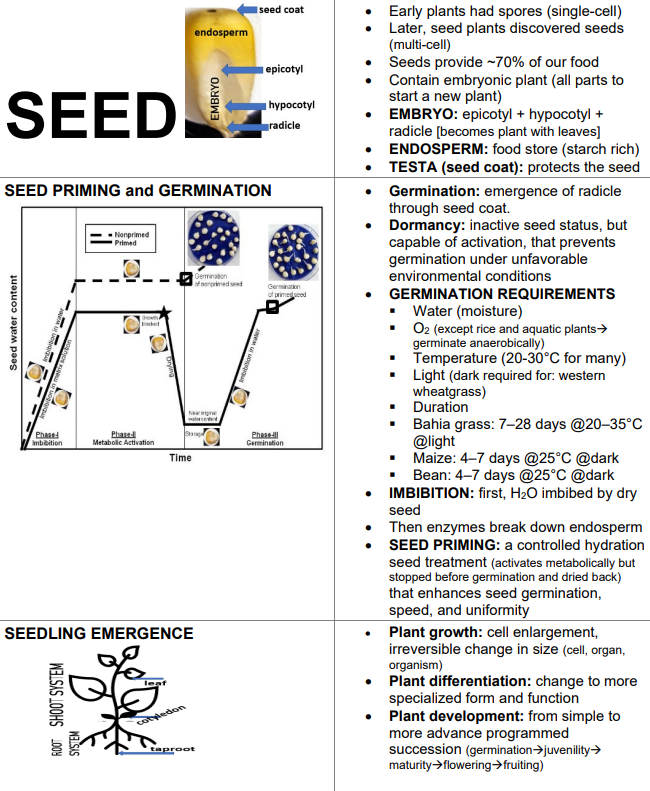1.20: Seed Germination and Seedling Establishment
- Page ID
- 73655

There is optimal temperature, light / darkness, and moisture requirement for seed germination of plant species. Days to germination varies from a few days (e.g., lettuce, cucumber, corn) to four days (e.g., cabbage, watermelon, kale) to five days (e.g., cauliflower, spinach) to six days (e.g., bean, carrot, eggplant, onion, pea) to seven days (e.g., celery) to eight days (e.g., pepper) to 13 days (e.g., parsley, parsnip) under optimal conditions of temperature and moisture.
Crop rotation rotates crop species three year turn from leaf/stem crops (e.g. cabbage, broccoli, kale) to bulb/tuber crops (e.g., onion, potato, carrot) to fruit /seed crops (e.g., peas, corn, pumpkin, tomato, pepper). Lastly, there are perennial vegetable crops that come back every year such as rhubarb and chives, which have benefits with varying flowering time, extended seasons, and hardiness under suboptimal environment conditions.
- SLO 20.01: Apply the best practices for learning germination and seedling establishment
- SLO 20.02: Describe the characteristics of germination and dormancy
- SLO 20.03: Describe the characteristics of basic plant growth requirements
- SLO 20.04: Describe the characteristics of favorable conditions and duration for germination
- SLO 20.05: Identify given plant species with their scientific names based on their key features
- SLO 20.06: Explain how seed germination related to seed quality
- SLO 20.07: Explain the nutritive value of seeds


- Assessment 1: TRUE or FALSE: A 2,000 year old date seed was found viable.
- Assessment.2: TRUE or FALSE: Double coconut palm (coco de mer, Lodoicea maldivica) seed is considered the largest seed (44 lb).
- Assessment 3: TRUE or FALSE: Flax seeds (linseed) are a great source of Omega-3 fatty acids, while pumpkin seeds are a great source of Omega-6 fatty acids.
- Assessment 4: TRUE or FALSE: Sunflower, lettuce, Swiss chard, radish, Chinese cabbage, tomato, and pea seeds travelled to the International Space Station.

- TRUE
- TRUE
- TRUE
- TRUE


